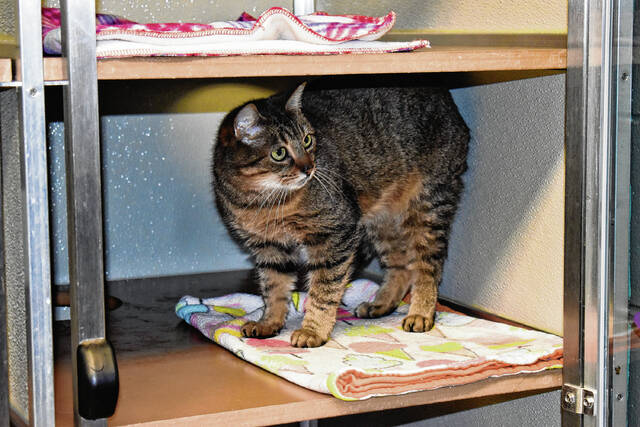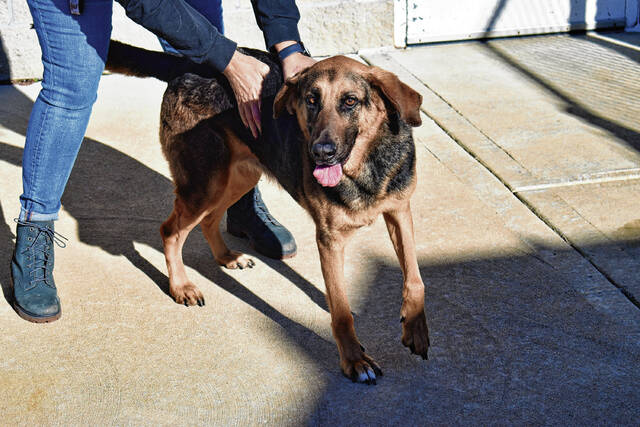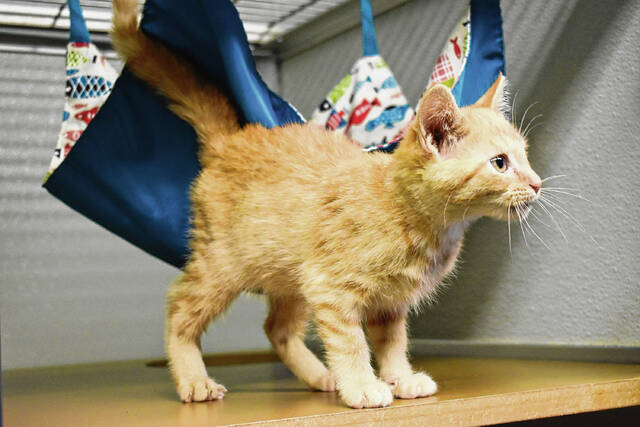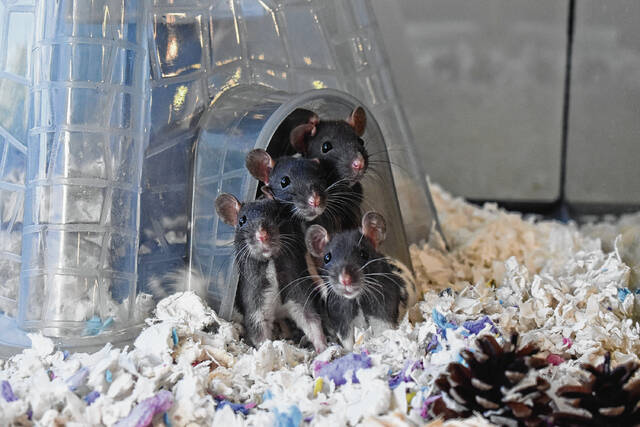
A crisis is unfolding at the Johnson County Animal Shelter due to a lack of a space that is threatening a decades-long pause on euthanizations.
Last year, 1,534 animals passed through the shelter’s doors. With about three more weeks to go this year, the shelter has already surpassed 1,700. The animal shelter had about 86 animals — 40 cats, 27 dogs, 11 rats, five rabbits, two guinea pigs and a rooster — on Monday. But the number is actually higher due to fluctuations among animals that are undergoing intake processing or may be given to rescues. The shelter is at 95% capacity. But when you factor in what the shelter can handle with current staffing, it is at about 125% capacity, said Cari Klotzsche, animal control director.
“Just because I have 42 dog kennels, (it) doesn’t mean that I can safely house 42 dogs,” Klotzsche said.
Animal shelters are like hospitals. Each space is like a hospital bed. Like a hospital, the shelter could get a bunch of animals in a single day and have to house all of them, she said.
There is not a single cause of the shelter’s crisis, but rather a multitude of causes.
A state law that was passed a few years ago requires all animals at the shelter to be fixed, which causes animals to stay at the shelter longer. Longer stays mean fewer beds for new animals.
Also, like many other employers right now, the shelter has a staffing shortage. They often receive applications from prospective hires, but they never show up for the interview. So, the shelters’ staff, and especially managers, have an increased workload. Many of the shelter’s managers are working up to 10 hours of overtime, Klotzsche said.
Weekends are tough for staff, especially when animals are brought in with medical conditions. For example, having so many dogs creates a lot of noise from barking, which can be stressful for those animals who have medical conditions and makes their conditions worse, she said.
The shelter’s medical budget is stretched thin. In addition to animals that come in with certain medical conditions, the staff also vaccinate and spay or neuter them. Those medical costs add up quickly, and with a higher number of animals, it’s hard to pay for everything the animals need, Klotzsche said.
The issues aren’t just affecting staff, but the animals as well. Dogs aren’t getting as much exercise, again due to the high number of them, she said.
“You are spending six hours of your day cleaning kennels, which gives you three hours to entertain, exercise — mentally and physically — 22 dogs,” Klotzsche said. “(Some dogs) go from having a lot of interaction to 23 and a half hours a day of sitting in a kennel. … Our job is to get them out as much as possible, and get them out of the building as quickly as possible — into homes (and) into rescues.”
The number of owners voluntarily surrendering their animals is also up. So far this year, 364 animals have been surrendered to the shelter, and the shelter is required by law to accept the animals no matter what. People give up their animals for a variety of reasons, such as going back to work after working from home, or moving to a new place that doesn’t allow pets, she said.
Exacerbating the issue is a lack of adoptions. The shelter has always struggled with adoptions, but it’s especially difficult right now. They have received 30 applications, but that does not mean the applicants will make it all the way through the adoption process, Klotzsche said.
The shelter offers free adoptions in December, which they thought would help encourage more people to adopt, but the issue remains. They have only had two adoptions so far this month, she said.
“We’ll put a chihuahua on the website and we’ll get 30 applications for that one dog. But then … we’ll have pit bulls sitting in the kennel because no one wants to adopt a pit bull,” Klotzsche said.
Now, the shelters’ staff is in an uncomfortable situation, teetering on the brink of having to euthanize animals.
“When I run out of kennels, and a stray dog comes in, (we) have to hold that dog for three to five days. I have no choice, so where am I going to put that dog,” she said. “I have to empty a kennel and if no one is adopting, I have to euthanize.”
On Monday, the shelter had five empty kennels available for dogs. If they were to have six dogs surrendered — like they had the previous Monday — they would have to face euthanizing an animal, Klotzsche said.
In the meantime, the shelter is hoping for more adoptions and fostering — especially of the barn cats, which are fixed and need to have an outside home, she said.
For adoptions, the shelter never does first-come, first-serve, but rather goes with what would be the best environment for the animal. The shelter also does not offer fostering, but there are rescue groups online from which people can sign up to foster animals. Once approved for fostering, an animal can be pulled from the shelter and people can choose to keep it or take care of it until it finds a permanent home, Klotzsche said.
People can also donate items or money to the shelter, such as toys to keep the dogs occupied, or tools to help with medications. All donations can be dropped off at the shelter in Franklin.
People could also share the shelter’s post on Facebook to help spread the word about animals that are available for adoption, she said.
“Just because the dog you see on there doesn’t sound appealing to (you), it doesn’t mean a friend on Facebook isn’t going to see it and say, ‘That’s the dog I’m looking for,’” Klotzsche said.
Free adoptions will continue through the end of the year. All adoptions include vaccinations, spay or neuter, and microchipping if the animal is not aggressive.









